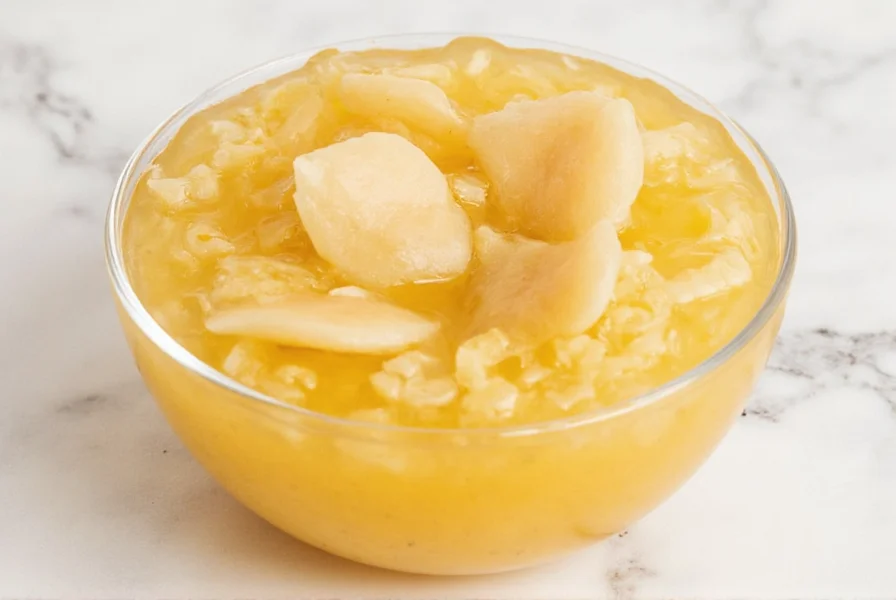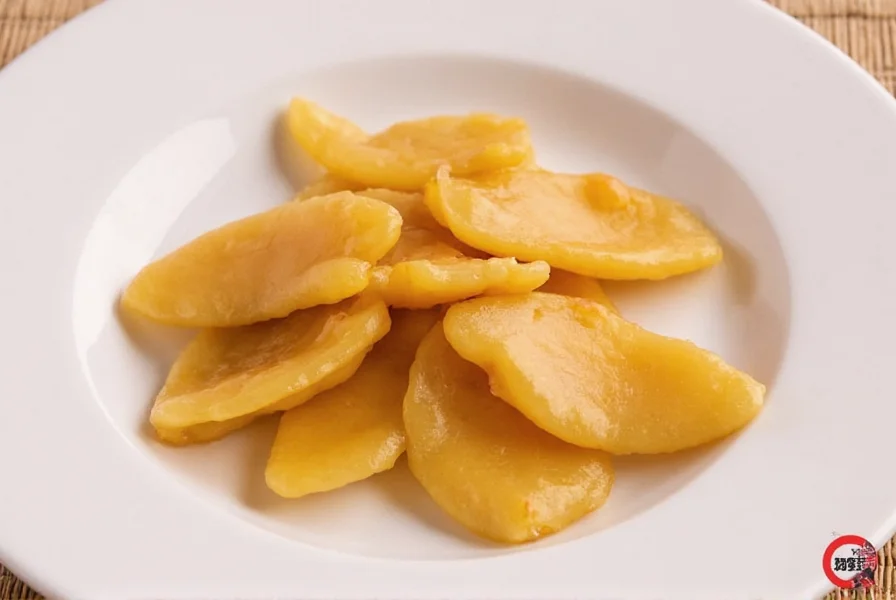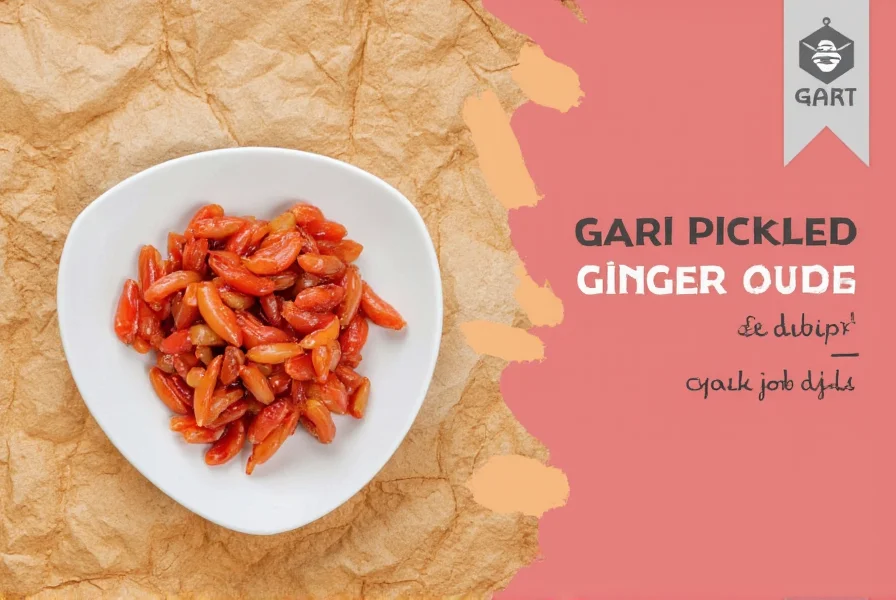Gari represents one of the most distinctive elements of traditional Japanese dining, particularly within sushi culture. Unlike regular ginger, which delivers a sharp, pungent bite, gari offers a refined flavor profile that complements rather than competes with delicate fish flavors. The transformation from raw ginger to this signature pink condiment involves a careful pickling process that mellow the ginger's natural heat while preserving its digestive benefits.
The Origins and Cultural Significance of Gari
Originating in Japan, gari has been an integral part of sushi dining for centuries. The practice of serving pickled ginger between different types of sushi dates back to the Edo period (1603-1868), when street vendors first began selling nigiri sushi in Tokyo. Chefs discovered that this mild pickled ginger effectively cleansed the palate, allowing diners to fully appreciate each subsequent piece of sushi without flavor interference.
The name "gari" comes from the Japanese onomatopoeic word "garigari," which describes the sound of crunching or grinding teeth—a reference to the ginger's traditional role in cleansing the palate. In authentic Japanese dining etiquette, gari should never be placed directly on sushi; instead, it's meant to be eaten separately to refresh the taste buds.
How Gari Differs From Other Pickled Ginger Varieties
Many people confuse gari with beni shoga (red pickled ginger) or regular Western-style pickled ginger, but significant differences exist:
| Type | Appearance | Flavor Profile | Primary Use |
|---|---|---|---|
| Gari | Pale pink, thin slices | Mild, sweet, subtle ginger flavor | Sushi palate cleanser |
| Beni Shoga | Bright red, shredded | Stronger, more vinegary | Yakitori, okonomiyaki topping |
| Western Pickled Ginger | Yellow or natural ginger color | Stronger, spicier, less sweet | General culinary use |
The distinctive pale pink color of traditional gari develops naturally when young ginger reacts with the vinegar during pickling. Many commercial products add artificial coloring, but authentic gari achieves its hue through the natural pickling process of immature ginger, which contains anthocyanin pigments that react with the acidic solution.

Ingredients and Traditional Preparation Method
Creating authentic gari requires specific ingredients and timing:
- Young ginger - Harvested early in the season when fibers are tender and skin is thin
- Rice vinegar - Provides the proper acidic base without overpowering flavors
- Sugar - Balances the acidity (traditionally Japanese rice syrup or sugar)
- Salt - Enhances flavor and acts as a preservative
The traditional preparation involves thinly slicing young ginger, then soaking it in a heated vinegar-sugar solution. The ginger must be young to achieve the characteristic tender texture—mature ginger would be too fibrous. After pickling for several days, the ginger develops its signature pale pink color and delicate flavor profile. Many home cooks wonder why is gari pink, and the answer lies in the natural reaction between the young ginger's compounds and the acidic vinegar solution.
Culinary Applications Beyond Sushi
While gari's primary role remains as a sushi accompaniment, creative chefs have found additional applications for this versatile ingredient:
- As a garnish for rice bowls and donburi dishes
- Chopped finely and added to salad dressings for subtle flavor
- Paired with rich fish like salmon or mackerel to cut through oiliness
- Used as a component in Japanese-inspired cocktails
- Added to bento boxes for visual appeal and palate refreshment
When serving gari, proper etiquette matters. In traditional Japanese dining, it should be eaten with the fingers rather than chopsticks, and never placed directly on sushi. The standard portion is a small mound placed to the side of the sushi plate, meant to be consumed between different types of fish to reset the palate.
Health Benefits of Gari Pickled Ginger
Gari retains many of the health benefits of fresh ginger while offering additional advantages from the fermentation process:
- Digestive aid - Gingerols in gari help stimulate digestive enzymes
- Nausea relief - Effective for motion sickness and morning sickness
- Antioxidant properties - Contains compounds that combat oxidative stress
- Anti-inflammatory effects - May help reduce inflammation markers
- Probiotic potential - Naturally fermented versions support gut health
Unlike raw ginger which can be quite spicy, gari's milder profile makes these benefits accessible to people who might otherwise avoid ginger due to its intensity. The pickling process preserves ginger's beneficial compounds while transforming its flavor profile into something more universally appealing.
Selecting and Storing Quality Gari
When purchasing gari, look for these quality indicators:
- Bright, consistent pale pink color (avoid unnaturally vibrant red)
- Thin, uniform slices with no browning
- Delicate texture that's tender but still slightly crisp
- Balanced flavor profile with equal parts sweet and sour
- No artificial preservatives or colors in the ingredients list
Proper storage extends gari's shelf life significantly. Keep unopened jars in a cool, dark pantry for up to 12 months. Once opened, transfer to an airtight container and refrigerate, where it will maintain quality for 2-3 months. The vinegar solution should completely cover the ginger slices to prevent spoilage. For those interested in how to make gari pickled ginger at home, the process requires young ginger, rice vinegar, sugar, and patience—typically 3-7 days of pickling time before the ginger develops its characteristic flavor and color.

Common Misconceptions About Gari
Several myths surround this traditional condiment:
- Misconception: Gari is just regular ginger dyed pink
Reality: Authentic gari develops its pale pink hue naturally from young ginger's reaction with vinegar - Misconception: Gari and beni shoga are the same product
Reality: They differ in preparation, flavor profile, and culinary application - Misconception: Gari should be eaten with sushi
Reality: It's meant to cleanse the palate between different sushi pieces, not consumed simultaneously - Misconception: All pickled ginger offers the same health benefits
Reality: Young ginger used in gari contains different compounds than mature ginger
Understanding these distinctions helps appreciate gari's unique role in Japanese culinary tradition. For those exploring traditional Japanese gari recipe options, authentic preparation emphasizes simplicity—just ginger, vinegar, sugar, and time—without artificial additives that compromise both flavor and potential health benefits.











 浙公网安备
33010002000092号
浙公网安备
33010002000092号 浙B2-20120091-4
浙B2-20120091-4